

Contoh Recount Text tentang Biografi Ki Hajar Dewantara Bapak Pendidikan Nasional
Masih dalam rangka Hari Pendidikan Nasional, admin akan memberikan contoh biografi Ki Hajar Dewantara yang merupakan Bapak Pendidikan Nasional. Lahir di Yogyakarta pada tanggal 2 Mei 1889. Hari lahirnya, diperingati sebagai Hari Pendidikan Nasional. Ajarannya yang terkenal yaitu tut wuri handayani (di belakang memberi dorongan), ing madya mangun karsa (di tengah menciptakan peluang untuk berprakarsa), ing ngarsa sungtulada (di depan memberi teladan).
Recount Text Biografi Ki Hajar Dewantara
Born with the name Raden Mas Soewardi Soeryaningrat. He came from the royal family environment Yogyakarta. Raden Mas Soewardi Soeryaningrat, when reached the age of 40 years by the count of the Year Caka, renamed Ki Hadjar Dewantara. Since then, he no longer uses a knighthood in front of his name. This meant that he could freely close to the people, either physically or her heart.
The trip was really marred his life of struggle and devotion for the sake of his people. He finished elementary school in the ELS (Elementary Netherlands) Then had continued to STOVIA (Bumiputera medical school), but it was not until the end due to illness. Then he worked as a journalist at several newspapers, among others Sedyotomo, Midden Java, De Express, Oetoesan Indies, Kaoem Moeda, Tjahaja Timoer and Poesara. At the time, he was classified as powerful writer. His writings are very communicative, sharp and patriotic so as to evoke the spirit of anti-colonial to readers.
Besides tenacious as a the young journalist, he is also active in social and political organizations. In 1908, he was active in the propaganda section Boedi Oetomo to socialize and arouse public awareness of Indonesia at that time about the importance of unity in the nation.
Then, along Douwes Dekker (Dr. Danudirdja Setyabudhi) and Dr. Cipto Mangoenkoesoemo, he founded the Indische Partij (the first political party that wing nationalism Indonesia) on December 25, 1912 which aims at achieving an independent Indonesia.
They are trying to register this organization to obtain legal status in the Dutch colonial government. But the Dutch government through the Governor General Idenburg trying to preclude the presence of this party by denying it registration on March 11, 1913. The reason for refusal was because the organization is considered to be able to evoke a sense of nationalism and unity to move against the Dutch colonial government.
Then, after the rejection of the registration of the legal entity status Indische Partij he was joined in forming Bumipoetra Committee in November 1913. The committee as well as a rival committee of the Hundred Years Independence Celebration Committee of the Dutch. Boemipoetera committee that the critique of the Dutch government which intends to celebrate one hundred years of its free the Netherlands from French colonialism to withdraw money from the people of colonies to finance the celebration party.
Pursuant to the celebration, he also criticized the article entitled Als Ik through Nederlander eens Was (If I’m A Dutch) and Een maar voor Allen Allen Ook voor Een (One for All, All for One but Also). If I An article published in the Dutch newspaper de Expres owned dr. Douwes Dekker, among others, reads:
“If I were a Dutchman, I will not organize parties freedom in our own country who had robbed her independence. Parallel to that way of thinking, is not only unfair, but also inappropriate to send the inlander give donations to fund the celebration.
Mind to organize a celebration in itself is insulting them and now we scratch his pocket anyway. Come forward and unseen insult it! If I’m a Dutchman. What offends me and fellow countrymen especially the fact that the nation is required to participate inlander finance a job that he himself was no interest at all “.
Due to the essay, the Dutch government through the Governor General Idenburg sentenced without trial, in the form of punishment internering (waste law) is a sentence by pointing to a shelter that allowed for a person to reside. He was sentenced to imprisonment on the island of Bangka.
Douwes Dekker and Cipto Mangoenkoesoemo compatriots feel unfairly treated. They also publish a pitched defending Soewardi. But the Dutch believed writing was inciting the people to revolt in hostile and colonial GOI. As a result, they are also exposed to penalties internering. Douwes Dekker dumped in Kupang and Cipto Mangoenkoesoemo exiled to the island of Banda.
But they want exiled to the Netherlands because there they can learn to do a lot of things from the remote areas. Finally they are allowed into the Netherlands since August 1913 as part of the execution.
The opportunity was used to explore the issue of education and teaching, so Raden Mas Soewardi Soeryaningrat managed to obtain a Certificate Europeesche.
Then he returned to his homeland in 1918. In the homeland she devoted attention in the field of education as part of the means of struggle for freedom.
After returning from exile, together with his compatriots, he also established a national institution patterned, Nationaal Onderwijs Instituut Taman siswa (National Education Taman siswa) on July 3, 1922. The College emphasizes a sense of national education to students so that they love the people and the land water and struggling to gain independence.
Not a few hurdles faced in fostering Taman Siswa. Dutch government seeks to impede it by issuing a Wild School Ordinance on October 1, 1932. But with persistence to fight for their rights, so the ordinance was later lifted.
In the midst of seriousness devote attention in education in Taman Siswa, he also remained diligent in writing. But his theme switching of political nuance to the educational and cultural vision of nationality. His writing hundreds of pieces. Through the writings that he successfully laid the foundations of national education for the Indonesian nation.
Meanwhile, in the days of the Japanese occupation, activity in the fields of politics and education continues. The Japanese government time to form the People Power Center (Son) in 1943, Ki Hajar sat as one of the leaders in addition to Ir. Sukarno, Drs. Muhammad Hatta and K.H. Mas Mansur.
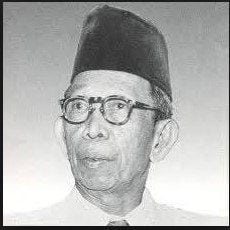
After days of kemedekaan, Ki Hajar Dewantara served as Minister of Education and Culture of the first. Name Ki Hadjar Dewantara not only immortalized as a character and Hero of education (father of National Education) the date of birth May 2 was made a National Education, but also defined as National Movement hero by decree President RI 305 1959, dated November 28, 1959. Other awards received is the title of Doctor Honoris Causa from the University of Gajah Mada in 1957. Two years after receiving the title of Doctor Honoris Causa, he died on April 28, 1959 at Yogyakarta and was buried there. Then by the successor college Student Park, established Dewantara Kirti Griya Museum,
Yogyakarta, to preserve the values of the spirit of struggle Ki Hadjar Dewantara. In this museum there are objects or works of Ki Hadjar as Tamansiswa founder and his work in the life of the nation. Museum collections in the form of papers or concept and important treatises as well as data correspondence Ki Hadjar lifetime as a journalist, educator, cultural and as an artist has been recorded on microfilm and laminated on the help the National Archives.
Source: http://www.tokohindonesia.com/biografi/article/295-pahlawan/1502-bapak-pendidikan-nasional
Semoga Bermanfaat !!!
- Facebook Messenger
Sebarkan ini:

Terbaru Terviral
Biogafi singkat ki hajar dewantara bahasa inggris.

Post a Comment for "Biogafi Singkat Ki Hajar Dewantara Bahasa Inggris "

Biografi Ki Hajar Dewantara Dalam Bahasa Inggris Beserta Artinya
Biografi Ki Hajar Dewantara Dalam Bahasa Inggris Beserta Artinya – Siapa yang tidak pernah mendengar sosok pahlawan yang satu ini! Benar sekali! Bapak Pendidikan Indonesia . Siapa lagi kalo bukan Ki Hajar Dewantara . Beliau adalah salah satu sosok penting dalam dunia pendidikan Indonesia.
Jadi, spesial pada edisi 17 Agustus tahun ini, admin akan mengenang jasa beliau melaui artikel mengenai biodata Ki Hajar Dewantara berikut ini. Semoga bermanfaat bagi sahabat BDBI semua ya. 😀
Jangan lupa, berkat beliau juga lho…hingga sekarang kita masih bisa ‘mengenyam’ pendidikan dengan bebas dan tenang. Sahabat bisa membaca artikel ini sambil belajar dengan santai, tanpa takut para penjajah. Ya kan? Ya dong? 😀 Yuk ah…langsung aja…let’s check it out!
[infobox style=”alert-gradient”]
Mode Baca Cepat:
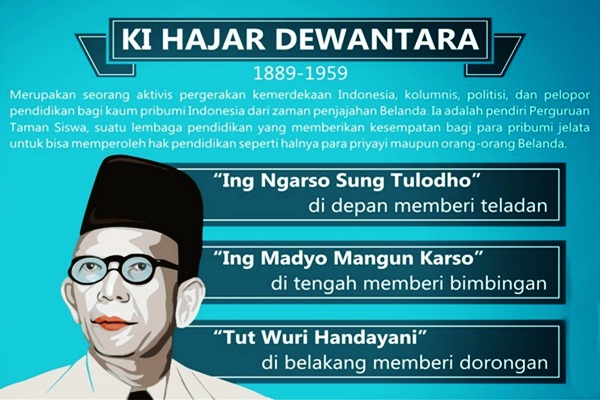
Raden Mas Soewardi Soeryaningrat was born in Yogyakarta on May 2 nd 1889. He came from Pakualaman family, the son of GPH Soerjaningrat, grandson of Pakualam III and grew up in a family of Yogyakarta Kingdom.
Then, in 1922 when he was 40 years old (according to the count of Caka Year), Raden Mas Soewardi Soeryaningrat changed his name to Ki Hadjar Dewantara .
Since that time, he was no longer using a knighthood in front of his name. Based on the Indonesian spelling in since 1972, its name is misspelled as Ki Hajar Dewantara.
Ki Hajar Dewantara ever studied at Europeesche Lagere School (ELS) at the Dutch colonial era it is an elementary school in Indonesia.
After graduating from ELS, then he went to STOVIA (Bumiputera Medical School) is a school for the education of indigenous doctors in Batavia in the Dutch colonial era. This time it became the Faculty of Medicine, University of Indonesia. Although he did not could not complete his education because of illness.
Ki Hajar Dewantara worked as a writer and journalist in various newspapers, such as: Tjahaja Timoer, Midden Java, De Expres, Sediotomo, Kaoem Moeda, Poesara, and Oetoesan Indies. His writing is very communicative and brave with anti-colonial spirit.
Besides work as a writer, he is also active in social and political organizations. Since 1908, the beginning of the Boedi Utomo (BO), he was active in the propaganda section to socialize and Indonesian public awareness about the importance of a sense of unity in the nation.
Not only that, it turns Ki Hajar Dewantara also known as a prominent pioneer of education for the natives of Indonesia from the Dutch colonial era.
In fact, he managed to establish a school of the National University Student Park (National Institute of Taman Siswa Onderwijs) on July 3 rd 1922.
At first the Dutch colonial government attempted to deter his plan. Dutch government issued a Wild School Ordinance on October 1 st 1932. However, because of his persistence and struggle, the ordinance was finally lifted.
The college emphasizes a sense of nationality to indigenous education so that they love the nation and homeland and fight for independence.
Ki Hajar Dewantara’s been appointed as Minister of Teaching Indonesia referred to as the Minister of Education, Teaching and Culture in the cabinet of the first Republic of Indonesia.
For his service pioneered education in Indonesia, in 1957 he received an honorary doctorate (doctor honoris causa, Dr.H.C.) of the University of Gadjah Mada (UGM).
Finally, he was declared as Father of National Education of Indonesia, as well as his birth day serves as National Education Day.
Ki Hajar Dewantara died on 26 th April 1959 in Yogyakarta. He was buried at the Taman Wijaya Brata, tombs for Taman Siswa’s family. His face was also immortalized on the Indonesian currency denomination of old 20,000 rupiahs.
Brief Biography of Ki Hajar Dewantara
Full Name: Raden Mas Soewardi Soerjaningrat
Other Names: Ki Hajar Dewantara, Father of Education, and Ki Hadjar Dewantara
Profession: Education Leaders
Religion: Islam
Place of Birth: Yogyakarta
Date of Birth: Thursday, May 2 nd 1889
Zodiac: Taurus
Nationality: Indonesia
Wife: Nyi Sutartinah
Date of Death: April 26 th 1959
Died Age: 69 years
Grave: Taman Wijaya Brata
Motto of Ki Hadjar Dewantara
- Ing Ngarso Sung Tulodo
- Ing Madyo Mangun Karso
- Tut Wuri Handayani
The most famous Posts of Ki Hajar Dewantara
If I A Dutch (Als ik een Nederlander was)
“If I were a Dutchman, I will not hold parties independence in a country that had we took his own independence. Parallel to the path of such thoughts, not only unfair, but also inappropriate to send the inlander made donation to fund the celebration. The idea to implement the celebration of that should be insulting them, and now we also dredging their gun. Let’s go ahead insult outwardly and inwardly it! If I were a Dutchman, it is particularly offended me and fellow countrymen is the fact that inlander required to participate sponsor an activity without the slightest interest for him”.
Source: De Expres, July 13 th 1913
Arti dari Biografi Ki Hajar Dewantara Dalam Bahasa Inggris
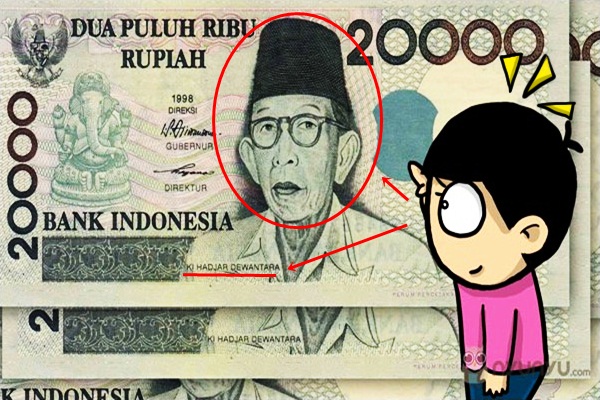
Raden Mas Soewardi Soeryaningrat dilahirkan di Yogyakarta pada tanggal 2 Mei tahun 1889. Beliau berasal dari lingkungan keluarga Pakualaman, putra dari GPH Soerjaningrat, cucu dari Pakualam III dan dibesarkan di lingkungan keluarga kraton Yogyakarta.
Barulah pada tahun 1922 saat beliau berusia 40 tahun (menurut hitungan Tahun Caka), Raden Mas Soewardi Soeryaningrat mengubah namanya menjadi Ki Hadjar Dewantara .
Semenjak saat itu pula,beliau tidak lagi menggunakan gelar kebangsawanan di depan namanya. Berdasarkan ejaan bahasa Indonesia yang berlaku sejak tahun 1972 namanya dieja menjadi Ki Hajar Dewantara .
Ki Hajar Dewantara pernah bersekolah di Europeesche Lagere School (ELS) yang mana pada saat zaman penjajahan Belanda itu adalah sekolah dasar di Indonesia.
Setelah lulus dari ELS, kemudian beliau bersekolah di STOVIA (Sekolah Dokter Bumiputera) yaitu sebuah sekolah untuk pendidikan dokter pribumi di Batavia pada zaman kolonial Hindia Belanda. Saat ini sekolah beliau menjadi menjadi Fakultas Kedokteran Universitas Indonesia. Meskipun beliau tidak tidak dapat menyelesaikan pendidikannya karena sakit.
Ki Hajar Dewantara bekerja sebagai penulis dan wartawan diberbagai surat kabar, seperti: Tjahaja Timoer, Midden Java, De Expres, Sediotomo, Kaoem Moeda, Poesara, dan Oetoesan Hindia. Tulisan beliau sangat komunikatif dan tajam dengan semangat antikolonial.
Selain bekerja sebagai penulis, beliau juga aktif dalam organisasi sosial dan politik. Sejak tahun 1908, awal berdirinya Boedi Oetomo (BO), beliau aktif di seksi propaganda untuk menyosialisasikan dan menggugah kesadaran masyarakat Indonesia mengenai pentingnya rasa persatuan dan kesatuan dalam berbangsa dan bernegara.
Tidak hanya itu, ternyata Ki Hajar Dewantara juga dikenal sebagai seorang tokoh pelopor pendidikan bagi kaum pribumi Indonesia dari zaman penjajahan Belanda.
Bahkan, beliau berhasil mendirikan sebuah sekolah Perguruan Nasional Taman Siswa (National Onderwijs Institut Taman Siswa) pada tanggal 3 Juli tahun 1922.
Pada awalnya pemerintah kolonial Belanda berupaya untuk menghalangi niat beliau. Pemerintahan Belanda mengeluarkan Ordonansi Sekolah Liar pada tanggal 1 Oktober tahun 1932. Namun berkat kegigihan dan perjuangannya, ordonansi tersebut akhirnya dicabut.
Perguruan ini sangat menekankan pendidikan rasa kebangsaan kepada pribumi agar mereka mencintai bangsa dan tanah air dan berjuang untuk memperoleh kemerdekaan.
Ki Hajar Dewantara pernah diangkat menjadi Menteri Pengajaran Indonesia disebut sebagai Menteri Pendidikan, pada kabinet Pengajaran dan Kebudayaan yang pertama Republik Indonesia.
Atas jasanya merintis pendidikan di Indonesia, pada tahun 1957 beliau mendapat gelar doktor kehormatan (doctor honoris causa, Dr.H.C.) dari Universitas Gadjah Mada (UGM).
Beliau akhirnya dinyatakan sebagai Bapak Pendidikan Nasional Indonesia, sekaligus juga hari kelahiran beliau dijadikan sebagai Hari Pendidikan Nasional.
Ki Hajar Dewantara meninggal dunia pada tanggal 26 April tahun 1959 di Yogyakarta. Beliau dimakamkan di Taman Wijaya Brata, makam untuk keluarga Taman Siswa. Wajah beliau juga diabadikan pada lembaran mata uang Indonesia pecahan 20.000 rupiah lama.
Arti dari Biodata Singkat Ki Hajar Dewantara
Nama Lengkap: Raden Mas Soewardi Soerjaningrat
Nama Lain: Ki Hajar Dewantara, Bapak Pendidikan, dan Ki Hadjar Dewantara
Profesi: Tokoh Pendidikan
Agama: Islam
Tempat Lahir: Yogyakarta
Tanggal Lahir: Kamis, 2 Mei 1889
Warga Negara : Indonesia
Istri: Nyi Sutartinah
Tanggal Meninggal: 26 April 1959
Usia Meninggal: 69 tahun
Makam: Taman Wijaya Brata
Semboyan Ki Hadjar Dewantara
- Ing ngarso sung tulodo (di depan memberi contoh)
- Ing madyo mangun karso, (di tengah memberi semangat)
- Tut Wuri Handayani, (di belakang memberi dorongan)
Tulisan Ki Hajar Dewantara yang paling terkenal
Seandainya Aku Seorang Belanda (Als ik een Nederlander was)
“Sekiranya aku seorang Belanda, aku tidak akan menyelenggarakan pesta-pesta kemerdekaan di negeri yang telah kita rampas sendiri kemerdekaannya. Sejajar dengan jalan pikiran itu, bukan saja tidak adil, tetapi juga tidak pantas untuk menyuruh si inlander memberikan sumbangan untuk dana perayaan itu. Ide untuk menyelenggarakan perayaan itu saja sudah menghina mereka, dan sekarang kita keruk pula kantongnya. Ayo teruskan saja penghinaan lahir dan batin itu! Kalau aku seorang Belanda, hal yang terutama menyinggung perasaanku dan kawan-kawan sebangsaku ialah kenyataan bahwa inlander diharuskan ikut mengongkosi suatu kegiatan yang tidak ada kepentingan sedikit pun baginya”.
Sumber: De Expres , 13 Juli 1913
Demikianlah biografi Ki Hajar Dewantara dalam bahasa inggris beserta artinya yang dapat kami berikan untuk sahabat setia BDBI semua. Semoga biodata Ki Hajar Dewantara diatas dapat memberikan tambahan informasi yang bermanfaat untuk sahabat semua. Terima kasih. 😀
Simak juga materi BDBI lainnya:
Biografi Agnes Monica Dalam Bahasa Inggris Beserta Artinya Terlengkap
Biografi mario teguh dalam bahasa inggris singkat dan terjemahannya, biografi ra kartini dalam bahasa inggris dan artinya terbaru, biografi soekarno dalam bahasa inggris singkat dan artinya terbaru, contoh biodata dalam bahasa inggris plus artinya, biodata yoona snsd dalam bahasa inggris dan artinya, share this:, related posts:.

Teks Pidato Singkat Bahasa Inggris Tentang Kebersihan Beserta Artinya

Penjelasan Materi Caption Bahasa Inggris Lengkap Beserta Contohnya

Kumpulan Ucapan Ultah Bahasa Inggris Beserta Artinya Terbaru
Cerita Liburan ke Danau dalam Bahasa Inggris dan Terjemahannya
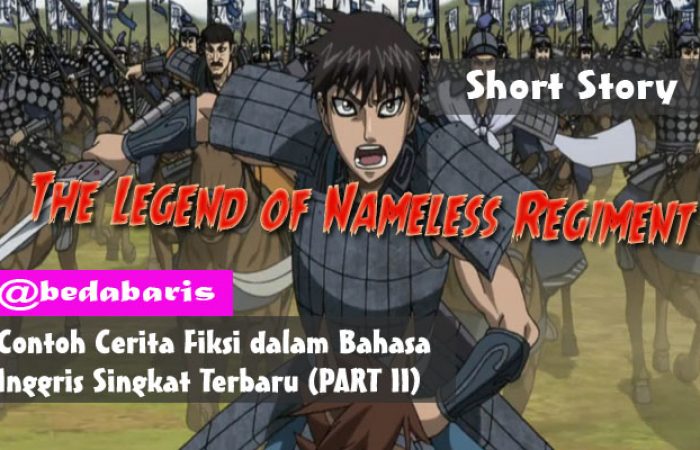
Contoh Cerita Fiksi dalam Bahasa Inggris Singkat Terbaru (PART II)

Contoh Cerita Fiksi Bahasa Inggris Singkat Terbaru
Ki Hajar Dewantara is really a great man. I proud of his struggling for his nation and people. He cares to his country’s independence and awareness them to love it. more over his attention to develop his people by founding education fond of Taman Siswa in Yogyakarta, in which the education for the Indonesian people was something exclusive at that time. Ki Hajar Dewantara sungguh merupakan seorang besar. saya bangga kepadanya atas perjuangannya untuk bangsa dan masyarakatnya. Beliau perduli pada Kemerdekaan Negaranya dan menyadarkan masyarakatnya untuk mencintai bangsanya. lebih-lebih perhatiannya untuk memajukan masyarakatnya dengan mendirikan lembaga pendidikan Taman Siswa di Yogyakarta, yang mana pendidikan bagi orang Indonesia merupakan sesuatu yang ekslusive pada saat itu.
izin salin ya gan 🙂
Silahkan gan. Jangan lupa sertakan sumbernya ya. 🙂
Leave a Reply Cancel reply
Your email address will not be published. Required fields are marked *

- Bahasa Indonesia
Indonesia Investments Report - March 2024 Edition
30 April 2024 (closed)
Jakarta Composite Index (7,234.20) +78.41 +1.10%
GDP Growth Q4-2023 5.04% (y/y)
Inflation March 2024 3.05% (y/y)
Central Bank BI 7-Day Reverse Repo April 2024 6.25%
National Heroes Indonesia: Ki Hajar Dewantara; Education Pioneer
Ki Hajar Dewantara (also known as Raden Mas Soewardi Soerjaningrat), 1889-1959, was a writer, columnist, politician and advocator of Indonesian independence from the Dutch colonial power. However, he may be most remembered for his pioneering role in the development of education in the Indonesian colony. A native of Yogyakarta (Java), Dewantara founded the Taman Siswa school in 1922 in Yogyakarta. This school provided education for native Indonesians, whereas previously education was limited to the Dutch colonials and Javanese aristocracy.
Born into a family of Javanese nobility ( priyayi ) Dewantara was able to receive education in the Dutch East Indies: primary school (ELS) and STOVIA (medical school for natives). However, he would not finish STOVIA due to an illness. Instead he started working as a journalist, writing for several newspapers.
During his days as journalist, Dewantara started to become increasingly active in social and political movements that aimed to undermine Dutch authority in the Archipelago . His articles in printed media became imbued with anti-colonial sentiments. Dewantara had close ties with the Boedi Oetomo (the first native political institution in the Dutch Indies and which played a key role in the Indonesian National Awakening).

On 13 July 1913 Dewantara published an article in the 'De Expres' newspaper, titled "If I Were a Dutchman". This article included heavy criticism toward plans of the Dutch colonizers to collect levies from the native population to finance festivities related to the 100th celebration of Dutch independence from France. Dutch authorities did not allow such criticism and captured Dewantara - together with his colleagues, Ernest Douwes Dekker and Tjipto Mangoenkoesoemo - and they were exiled to the Netherlands (the exile was also the result of their activities in the Indische Partij , one of the first political organizations pioneering Indonesian nationalism in the colonial regime).
During his exile in the Netherlands Dewantara obtained an European Teachers Certificate and he became acquainted with the ideas of Montessori and Froebel, western education pioneers. A few years later when he arrived back in the Archipelago he first established a school in Yogyakarta together with his brother. Later, in 1922, he founded the Taman Siswa school. Prior to Taman Siswa, education in the Archipelago was only open to Dutch people and those natives that were part of the nobility (which included Dewantara). Besides general knowledge, students were also taught to love the Archipelago and respect social equality (Dewantara himself would later scrap the Javanese title of Raden Mas in front of his name in a gesture to support social equality).

During the Japanese period (1942-1945) Dewantara, Soekarno , Muhammad Hatta and K.H. Mas Mansur were appointed as leaders of the People Power Center ( Pusat Tenaga Rakyat ), a Japanese-sponsored umbrella organization for all nationalist organizations on Java and Madura. After independence, Dewantara was appointed as Minister of Education and Culture in the first cabinet of Soekarno.
Interesting Trivia Facts:
• Every year, on the second of May (Dewantara's birthday), Indonesia celebrates National Education Day.
• Dewantara is credited for coining the Javanese proverb " ing ngarso sung tulodo, ing madyo mangun karso, tut wuri handayani ", meaning "those in front should set an example, those in the middle should raise the spirit, and those in the back should give encouragement". The part Tut Wuri Handayani is still used today as motto of Indonesia's Ministry of Education.
Share this column
‹ Back to Culture Columns
Please sign in or subscribe to comment on this column
Susan Bennett | 06 March 2016 09:56
Thanks to the writer of this column for a most informative slice of history
Today's Headlines
- Indonesia Investments Released Its March 2024 Report 05 April 2024
- Renewable Energy in Indonesia: Overview, Challenges and Potential of Geothermal Energy 22 March 2024
- Consumer Price Index of Indonesia: Finally Some Inflationary Pressures in February 2024 13 March 2024
- Economic Update Indonesia; Taking a Look at Various Recently Released Macroeconomic Data 13 March 2024
- Indonesia Investments Releases Its February 2024 Report 07 March 2024
A Philosophical Perspective on the Purpose of Education in Indonesia
- First Online: 19 March 2023
Cite this chapter

- Dorothy Ferary ORCID: orcid.org/0000-0002-9852-8043 2
246 Accesses
1 Citations
This chapter will look at the purpose of education in the context of Indonesia’s past and present. I will draw on the philosophy of Ki Hajar Dewantara (1889–1959), who is regarded as the father of Indonesian education. In conceptualising education, he was influenced by his upbringing, local culture, and international influences from various educators and philosophers such as Rabindranath Tagore, Maria Montessori, and Friedrich Fröbel. This chapter is particularly timely because the Indonesian government has started to critically re-examine two of the educational concepts proposed by Dewantara, which are “ pendidikan karakter ” (character education) and “ merdeka belajar ” (independent learning). The chapter will start with a discussion on the purpose of education before introducing Dewantara and his background. I will then offer two comparisons; First, between Dewantara’s purpose of education and the aims of Dutch schools during the colonial period in Indonesia, highlighting the importance of imparting local wisdom and values in Dewantara’s school which were ignored by the colonial schools. Second, between Dewantara’s purpose of education and the current government’s policies. By doing so, I will highlight the different purposes articulated for education in various contexts, from the colonial era to present-day Indonesia. The conclusion of this chapter is that there have been profound changes to the very purpose of education in Indonesia. Nevertheless, Dewantara’s philosophy is still very much relevant today and thus, the Indonesian government should revisit its conceptualisation of the foundations of education. Dewantara’s thought is also likely to see increased interest in other countries due to a growing global demand for awareness of non-Western educational philosophies.
This is a preview of subscription content, log in via an institution to check access.
Access this chapter
- Available as PDF
- Read on any device
- Instant download
- Own it forever
- Available as EPUB and PDF
- Compact, lightweight edition
- Dispatched in 3 to 5 business days
- Free shipping worldwide - see info
- Durable hardcover edition
Tax calculation will be finalised at checkout
Purchases are for personal use only
Institutional subscriptions
Afzal, M. (2011). Micro econometric analysis of private returns to education and determinants of earnings. Pakistan Economic and Social Review, 49 (1), 39–68.
Google Scholar
Aggarwal, J. C. (2010). Theory and principles of education . Vikas Publishing House.
Bass, R. V., & Good, J. W. (2004). Educare and educere: Is a balance possible in the educational system? The Educational Forum , 68 (Winter), 161–168. https://files.eric.ed.gov/fulltext/EJ724880.pdf
Bjork, C. (2005). Indonesian education: Teachers, schools, and central bureaucracy . Routledge.
Book Google Scholar
Brand, J. (2010). Civic returns to higher education: A note on heterogeneous effects. Social Forces, 89 (2), 417–433. https://doi.org/10.1353/sof.2010.0095
Article Google Scholar
Burbules, N. C., & Warnick, B. R. (2006). Philosophical inquiry. In G. Camilli, P. Elmore, & J. Green (Eds.), Complementary methods for research in education (3rd ed., pp. 489–502). American Educational Research Association.
Burnett, A. (1962). Montessori education today and yesterday. The Elementary School Journal, 63 (2), 71–77.
Craft, M. (1984). Education for diversity. In M. Craft (Ed.), Education and cultural pluralism (pp. 5–26). Falmer Press.
Danner, H. (1994). Bildung: A basic term of German education. Educational Sciences , 9 . https://www.helmut-danner.info/pdfs/German_term_Bildung.pdf
Dee, T. (2006). Are there civic returns to education? Journal of Public Economics, 88 (9–10), 1697–1720.
Dewantara, K. H. (1962a). Dr. Maria Montessori penganjur pendidikan merdeka. In Majelis Luhur Persatuan Taman Siswa (Ed.), Karja Ki Hadjar Dewantara. Bagian Pertama: Pendidikan (pp. 265–273). Taman Siswa.
Dewantara, K. H. (1962b). Hubungan kita dengan Dr. Tagore. In Majelis Luhur Persatuan Taman Siswa (Ed.), Karja Ki Hadjar Dewantara. Bagian Pertama: Pendidikan (pp. 131–134). Taman Siswa.
Dewantara, K. H. (1962c). Methode Montessori, Fröbel dan taman anak. In Majelis Luhur Persatuan Taman Siswa (Ed.), Karja Ki Hadjar Dewantara. Bagian Pertama: Pendidikan (pp. 241–242). Taman Siswa.
Dewantara, K. H. (1962d). Sifat dan maksud pendidikan. In Majelis Luhur Persatuan Taman Siswa (Ed.), Karja Ki Hadjar Dewantara. Bagian Pertama: Pendidikan (pp. 89–94). Taman Siswa.
Dewantara, K. H. (1962e). Tentang Fröbel dan methodenya. In Majelis Luhur Persatuan Taman Siswa (Ed.), Karja Ki Hadjar Dewantara. Bagian Pertama: Pendidikan (pp. 249–255). Taman Siswa.
Dewantara, K. H. (1962f). Pendidikan Keluarga. In Majelis Luhur Persatuan Taman Siswa (Ed.), Karja Ki Hadjar Dewantara. Bagian Pertama: Pendidikan (pp. 369–392). Taman Siswa.
Dewantara, K. H. (1962g). Pelajaran Serimpi dan Konsekuensinya. In Majelis Luhur Persatuan Taman Siswa (Ed.), Karja Ki Hadjar Dewantara. Bagian Pertama: Pendidikan (pp. 304–306). Taman Siswa.
Dewantara, K. H. (1962h). Bahasa Jawa sebagai Bahasa Pengantar di Sekolah MULO. In Majelis Luhur Persatuan Taman Siswa (Ed.), Karja Ki Hadjar Dewantara. Bagian Pertama: Pendidikan (pp. 506–508). Taman Siswa.
Dewantara, K. H. (1962i). Hubungan Internasional. In Majelis Luhur Persatuan Taman Siswa (Ed.), Karja Ki Hadjar Dewantara. Bagian Pertama: Pendidikan (pp. 126–128). Taman Siswa.
Dewantara, K. H. (1962j). Hubungan Perguruan Kita Dengan Luar Negri. In Majelis Luhur Persatuan Taman Siswa (Ed.), Karja Ki Hadjar Dewantara. Bagian Pertama: Pendidikan (pp. 135–137). Taman Siswa.
Dewantara, K. H. (1962k). Bahasa-Bahasa Asing. In Majelis Luhur Persatuan Taman Siswa (Ed.), Karja Ki Hadjar Dewantara. Bagian Pertama: Pendidikan (pp. 135–137). Taman Siswa.
Dewantara, K. H. (1964). Asas-asas dan dasar-dasar Taman Siswa . Madjelis Luhur Taman Siswa.
Dewey, J. (1916). Democracy and education: An introduction to the philosophy of education . MacMillan.
Dhofier, Z. (1999). The pesantren tradition: The role of the kyai in the maintenance of traditional Islam in Java . Arizona State University Center for Asian Research.
Diniyah, F. (2017). Persepsi orangtua dan guru mengenai Bahasa Inggris pada anak usia dini di TK ABA Karangmalang Yogyakarta. Jurnal Tarbiyah (Jurnal Ilmu Kependidikan) , 6 (2), 29–39. https://doi.org/10.18592/tarbiyah.v6i2.1594
Doan, T., & Stevens, P. (2011). Labour market returns to higher education in Vietnam. Economics-the Open Access Open Assessment Journal, 5 , 1–21. https://doi.org/10.5018/economics-ejournal.ja.2011-12
Ferary, D. (2021). On Ki Hadjar Dewantara’s Philosophy of Education. Nordic Journal of Comparative and International Education (NJCIE), 5 (2), 65–78. https://doi.org/10.7577/njcie.4156
Fröbel, F. (1967). Frederich Fröbel: A selection from his writings . Cambridge University Press.
Fröbel, F. (1887). The education of man (W. N. Hailmann (ed.)). D.Appleton.
Furnivall, J. S. (1944). Netherlands India: A Study of Plural Economy . Cambridge University Press.
Gidley, J. (2016). Postformal Education: A Philosophy for Complex Futures . Springer.
Glewwe, P., Gragnolati, M., & Zaman, H. (2002). Who gained from Vietnam’s boom in the 1990s? Economic Development and Cultural Change, 50 (4), 773–792.
Gupta, A. D. (2002). Rabindranath Tagore in Indonesia: An experiment in bridge-building. Bijdragen Tot De Taal-, Land- En Volkenkunde, 158 (3), 451–477.
Hadiwijoyo, K.S. (2016), Pendidikan Ketamansiswaan Jilid I , Jakarta: Majelis Cabang Taman Siswa Jakarta.
Hutchinson, Y., Ochoa, A. A. C., Paulson, J., & Tikly, L. (Eds.). (2023). Decolonizing education for sustainable futures . Bristol University Press.
Kelch, K. (2014). Becoming history. Taman Siswa and its influence on the Indonesian national education (Master Thesis: Research Master Area Studies: Asia and the Middle East). https://hdl.handle.net/1887/29534
Koosgard, C. M. (1983). Two distinctions in goodness. The Philosophical Review, 92 (2), 169–195.
Marzuki, & Khanifah, S. (2016). Pendidikan ideal perspektif Tagore dan Ki Hajar Dewantara dalam pembentukan karakter peserta didik. Jurnal Civics: Media Kajian Kewarganegaraan , 13 (2), 172–181. https://doi.org/10.21831/civics.v13i2.12740
Masschelein, J., & Ricken, N. (2003). Do we (still) need the concept of bildung? Educational Philosophy and Theory, 35 (2), 139–154.
McCowan, T. (2012). Is there a universal right to education? British Journal of Educational Studies , 60 (2), P111.128. https://doi.org/10.1080/00071005.2011.648605
McMahon, W. (2007). An analysis of education externalities with applications to development in the deep south. Contemporary Economic Policy, 25 (3), 459–482. https://doi.org/10.1111/j.1465-7287.2007.00041.x
McMahon, W. (2009). The private and social benefits of higher education . The John Hopkins University Press.
McVey, R. (1967). Taman Siswa and the Indonesian national awakening. Indonesia, 4 , 128–149.
Meyer, R. (2002). Rote Versus Meaningful Learning. Theory into Practice, 41 (4), 226–232.
Ministry of Education. (2010). Desain induk pendidikan karakter . Ministry of Education.
Ministry of Education and Culture. (2020a). Keemndikbud Dorong “Link and Match” Pendidikan Vokasi dengan DUDI . https://www.vokasi.kemdikbud.go.id/read/kemendikbud-dorong-link-and-match-pendidikan-vokasi-dengan-dudi
Ministry of Education and Culture. (2020b). Merdeka belajar untuk semangat dan inspirasi peningkatan pendidikan . https://www.kemdikbud.go.id/main/blog/2020b/08/merdeka-belajar-untuk-semangat-dan-inspirasi-peningkatan-pendidikan
Ministry of Education and Culture. (2021). Program organisasi penggerak . https://p3gtk.kemdikbud.go.id/laman/program-organisasi-penggerak
Moncrieffe, M. L. (Ed.), (2022). Decolonising curriculum knowledge: International perspectives and interdisciplinary approaches . Palgrave Macmillan.
Montessori, M. (1948). The discovery of the child . Kalakshetra Publications.
Montessori, M. (1949). The absorbent mind . The Theosophical Publishing House.
Muthoifin. (2015). Pemikiran pendidikan multikultural Ki Hadjar Dewantara. Intizar , 21 (2), 299–317. http://jurnal.radenfatah.ac.id/index.php/intizar/article/view/314
Nussbaum, M. (1997). Cultivating humanity . Harvard University Press.
Niemczyk, E. (2019), Glocal education in practice: Teaching, researching, and citizenship, Glocal education in practice: Teaching, researching, and citizenship , Sofia: The Bulgarian Comparative Education Society. https://www.researchgate.net/publication/340756367_Glocal_education_in_practice_Teaching_researching_and_citizenship
Odari, M. (2020). The role of value creating education and Ubuntu Philosophy in Fostering Humanism in Kenya. Journal of Interdisciplinary Studies in Education, 9 (S1), 56–68.
Prihatni, Y. (2014). Pendekatan saintifik dalam ajaran Ki Hadjar Dewantara. Prosiding Seminar Nasional Pendidikan Sains . http://journal.ustjogja.ac.id/download/prosiding seminar nasional pendidikan sains.pdf
Psacharopoulos, G. (1972). The marginal contribution of education to economic growth. Economic Development and Cultural Change, 20 (4), 641–658.
Psacharopoulos, G. (1973). Returns to education: An international comparison . Elsevier.
Psacharopoulos, G. (1981). Returns to investment in education: A global update. World Development, 22 (9), 1325–1343.
Psacharopoulos, G. (1985). Returns to education: A further international update and implication. The Journal of Human Resources, 20 (4), 583–604.
Putra, P. (2007). Implementasi pendidikan karakter dalam pembelajaran IPA di MIN Pemangkat Kabupaten Sambas Kalimantan Barat. Jurnal Ilmiah PGMI , 3 (1), 49–61. https://core.ac.uk/download/pdf/267946495.pdf
Radcliffe, D. (1971). Ki Hadjar Dewantara and the Taman Siswa Schools; Notes on an Extra-Colonial Theory of Education. Comparative Education Review, 15 (2), 219–226.
Rahardjo, S. (2013). Ki Hajar Dewantara biografi singkat 1889–1959 . Garasi House of Book.
Rizal, I. (2013), Konsep Paguron Ki Hadjar Dewantara Dalam Taman Siswa 1922–1945, Thesis S1, Fakultas Ilmu Sosial universitas Negeri Yogyakarta. Available from: https://eprints.uny.ac.id/21098/
Rokhman, F., Ahmadi, F., & Kusumaningtyas, R. D. (2017). Konsep ideal Labschool . Pilar Nusantara.
Saefuddin, A., & Solahudin, M. (2009). Menuju manusia merdeka: Ki Hadjar Dewantara . Leutika.
Schady, N. R. (2003). Convexity and sheepskin effects in the human capital earnings function: Recent evidence for Filipino men. Oxford Bulletin of Economics and Statistics, 65 (2), 171–196. https://doi.org/10.1111/1468-0084.00042
Scherer, S. (1975). Harmony and dissonance: Early nationalist thought in Java . Cornell University.
Serry, A. (2012). Froebel’s pielpaedagogik and the playfulness of postmodernısm (Occational Paper No. 2).
Shihab, N., & Komunitas Guru Belajar. (2017). Merdeka belajar di ruang kelas . Literati.
Steenbrink, K. A. (1986). Pesantren, madrasah, sekolah: Pendidikan Islam dalam kurun modern . Lembaga Penelitian, Pendidikan dan Penerangan Ekonomi dan Sosial.
Strauch-Nelson, W. (2012). Reuniting art and nature in the life of a child. Art Education, 65 (3), 33–38. https://doi.org/10.1080/00043125.2012.11519174
Supardi, Kuntoro, S. A., & Dwiningrum, S. I. A. (2018). Ki Hadjar Dewantara and Rabindranath Tagore’s thought about education. Journal of Social Studies , 14 (1), 48–62. https://doi.org/10.21831/jss.v14i1.21653
Tagore, R. (1929). Ideals of Education. The Visva-Bharati Quarterly , April - July , 73–74.
Tagore, R. (1992). Ashramer siksha. In Rabindra Rachanabali, Volume 14 . Government of West Bengal.
Tagore, R. (2003). Tagore, education, cosmopolitanism. In . F. Alatas, L. T. Ghee, & K. Kuroda (Eds.), Asian interfaith dialogue (pp. 78–92). The World Bank.
Towaf, S. M. (2016). The national heritage of Ki Hadjar Dewantara in Taman Siswa about culture-based education and learning. Journal of Education and Practice, 7 (23), 167–176.
Triatmanto. (2010). Tantangan implementasi pendidikan karakter di sekolah. Cakrawala Pendidikan , 29 (edisi khusus dies natalis UNY), 187–203. https://doi.org/10.21831/cp.v1i3.245
Tsuchiya, K. (1987). Democracy and leadership. The rise of the Taman Siswa movement in Indonesia . University of Hawaii Press (Monographs of the Center for Southeast Asian Studies, Kyoto University, 18).
Varkøy. (2010). The concept of “Bildung.” Philosophy of Music Education Review, 18 (1), 85. https://doi.org/10.2979/pme.2010.18.1.85
Wahyu. (2011). Masalah dan usaha membangun karakter bangsa. Jurnal Komunitas Universitas Negri Semarang , 3 (2), 138–149. https://www.researchgate.net/publication/307660593_MASALAH_DAN_USAHA_MEMBANGUN_KARAKTER_BANGSA
Walker, M. (2018). Aspirations and equality in higher education: Gender in a South African university. Cambridge Journal of Education, 48 (1), 123–139. https://doi.org/10.1080/0305764X.2016.1254159
Wijayanti, D. (2018). Character education designed by Ki Hadjar Dewantara. Eduhumaniora: Jurnal Pendidikan Dasar , 10 (2), 85–91. https://doi.org/10.17509/eh.v10i2.10865
Wiryopranoto, S., Herlina, N., Marihandono, D., Tangkilisan, Y., and Tim Museum Kebangkitan Nasional, (2017), Ki Hajar Dewantara Pemikiran dan Perjujangannya , Jakarta: Museum Kebangkitan Nasional dan Direktorat Jendral Kebudayaan Kementrian Pendidikan dan Kebudayaan. Avaialable online on: http://repositori.kemdikbud.go.id/4881/1/Buku%20Ki%20Hajar%20Dewantara.pdf
Woodward, K. (2015). Indonesian schools: Shaping the future of Islam and democracy in a democratic Muslim country. Journal of International Education and Leadership., 5 (1), 1–23.
Yanuar, Y. (2019). 3 Alasan Jokowi pilih Nadiem Makarim sebagai Mendikbud. Tempo . https://tekno.tempo.co/read/1264074/3-alasan-jokowi-pilih-nadiem-makarim-sebagai-mendikbud/full&view=ok
Yusuf, T. (1969). In commemoration of the late Ki Hadjar Dewantara. The founder of the national educational institution:Taman Siswa and the cornerstone layer of the Indonesian National Education. On his 80th birth anniversary May, 2 1889–1969 . The Embassy of the Republic of Indonesia in the Philippines.
Zakaria, R. (2008). Indonesian Islamic Education: A social, historical and political perspective . VDM Verlag.
Download references
Acknowledgements
This chapter is an updated version of my previous article published by the Nordic Journal of Comparative and International Education (NJCIE) (see Ferary, 2021 ). I reserved the copyright and right of reproduction of my manuscript for the NJCIE publication. I would like to thank Prof. David Hebert and Dr. Matt Woolgar for reading a draft version of this article and providing feedback.
Author information
Authors and affiliations.
Institute of Education, University College London, London, UK
Dorothy Ferary
You can also search for this author in PubMed Google Scholar
Corresponding author
Correspondence to Dorothy Ferary .
Editor information
Editors and affiliations.
Faculty of Education, Western Norway University of Applied Sciences, Bergen, Norway
David G. Hebert
Rights and permissions
Reprints and permissions
Copyright information
© 2023 The Author(s), under exclusive license to Springer Nature Singapore Pte Ltd.
About this chapter
Ferary, D. (2023). A Philosophical Perspective on the Purpose of Education in Indonesia. In: Hebert, D.G. (eds) Comparative and Decolonial Studies in Philosophy of Education. Springer, Singapore. https://doi.org/10.1007/978-981-99-0139-5_4
Download citation
DOI : https://doi.org/10.1007/978-981-99-0139-5_4
Published : 19 March 2023
Publisher Name : Springer, Singapore
Print ISBN : 978-981-99-0138-8
Online ISBN : 978-981-99-0139-5
eBook Packages : Education Education (R0)
Share this chapter
Anyone you share the following link with will be able to read this content:
Sorry, a shareable link is not currently available for this article.
Provided by the Springer Nature SharedIt content-sharing initiative
- Publish with us
Policies and ethics
- Find a journal
- Track your research
- Greater Jakarta
- BINUS @Greater Jakarta
- BINUS @Bekasi
- BINUS @Bandung
- BINUS @Malang
- BINUS @Semarang
- Organizational Structure
- Vision and Mission
- BSSC Earth Hour
- BSSC Festival
- BSSC Wonder
- BSSC Squarelympic
- BSSC Language Class
- BSSC Sport Class
- BSSC Dance & Tee Modification Class
- BSSC Sport Community
- BSSC Music Community
- BSSC Company Visit
- BSSC Culture Share
- BSSC Halloween
- BSSC Blood Donation
- BSSC Social Act
- BSSC Farewell
- BSSC Sport Weekend
- BSSC Seminar
- BSSC Sharing Session
- BSSC Gathering
- BSSC Cadre Forming
- BSSC Art Community
- BSSC Benchmarking
- BSSC WONDER
- BSSC Workshop
- BSSC Webinar & Talk show
- BSSC Social “Distancing” Movement
- BSSC International Class
- BSSC Volunteers
- BSSC Training
- BSSC Farewell Party
- BSSC Senior Cadre Forming
- EXCOOR Training Program
- Technical Skills Training Program
Ki Hajar Dewantara as the Father of Education
Source: edukasi.kompas.com
Raden Mas Soewardi Soerjaningrat or commonly known as Ki Hajar Dewantara was born in Yogyakarta on May 2 nd , 1889. He has a father named Kanjeng Pangeran Haryo Soeryaningrat and a mother named Raden Ayu Sandiah who is a descendant of the royal aristocrat Sri Sultan Hamengkubuwono I. He was part of the royal family so that he could get a proper education compared to people in general during the Dutch colonial period at that time.
Source: minews.id
He started his educational journey at Europeesche Lagere School (ELS), a Dutch elementary school. After that, he continued his education at a teacher school in Yogyakarta called Kweekschool. During his study in Kweekschool, he was offered a scholarship in STOVIA. He stopped his current studies and entered STOVIA (School tot Opleiding van Inlandsche Artsen) in Batavia, which is now the capital city of Indonesia (Jakarta). However, during that time, he quit school after four months due to his health condition.
Source: mmc.tirto.id
After leaving medical school, Ki Hajar Dewantara worked as a journalist in several newspapers such as De Express, Midden Java, Sedyotomo, and so on. He also met important Indonesian figures such as Soetomo, Douwes Dekker, and Tjipto Mangoenkoesoemo at the medical school because they were active in organizations. He once joined a political party, the Indische Partij, to criticize the Dutch government.
Ki Hajar Dewantara was once exiled to the Netherlands because of his writings. The article contained harsh criticism of the Dutch colonial government at that time. It could revive the enthusiasm of the Indonesian people to fight against the Dutch government. However, Ki Hajar Dewantara’s exile to the Netherlands did not stop him from studying.
Source: psr.ustjogja.ac.id
After returning to Indonesia, Ki Hajar Dewantara founded an organization called Taman Siswa. This organization aims to provide education to all Indonesian people so that they could get a proper education. After Indonesia’s independence, Ki Hajar Dewantara was appointed as the first minister of education. May 2 nd , the birth date of Ki Hajar Dewantara, is also designated as a day of education in Indonesia. It is an appreciation to Ki Hajar Dewantara for his concern for education in Indonesia.
Source: dosenpendidikan.co.id
Ki Hajar Dewantara also left behind several mottoes that are quite well-known in Indonesian education. Those are Ing Ngarso Sung Tuladha , Ing Madya Mangun Karsa , and Tut Wuri Handayani . Ing Ngarso Sung Tuladha means those in front must be role models for those behind them . Ing Madya Mangun Karsa means those in the middle must build or give enthusiasm, will, or intention to those in front and behind. Tut Wuri Handayani means the one behind, encouraging those in front.
References:
https://hot.liputan6.com/read/4350679/biografi-ki-hajar-dewantara-singkat-gambarkan-kiprahnya-di-dunia-jurnalistik#:~:text=Biografi%20Ki%20Hajar%20Dewantara%20Singkat%20dari%20Pendidikan&text=Ki%20Hajar%20Dewantara%20lahir%20dengan,keluarga%20bangsawan%20Puro%20Pakualaman%20Yogyakarta.&text=Suryaningrat%20dan%20Ibunya%20bernama%20Raden%20Ayu%20(R.A.)%20Sandiah
https://kumparan.com/berita-hari-ini/biografi-ki-hajar-dewantara-sosok-bapak-pendidikan-nasional-1v8vPPYLvpr
https://lifestyle.kontan.co.id/news/biografi-ki-hajar-dewantara-bapak-pendidikan-indonesia?page=all
https://tirto.id/tiga-serangkai-indische-partij-dalam-sejarah-pergerakan-nasional-gaRW
https://kids.grid.id/read/472458871/arti-semboyan-ki-hajar-dewantara-ing-ngarsa-sung-tuladaing-madya-mangun-karsatut-wuri-handayani?page=all
Image Sources:
https://edukasi.kompas.com/image/2017/05/02/13433871/siapa.dan.apa.ajaran.ki.hadjar.dewantara.?page=1
https://www.minews.id/kisah/stovia-sekolah-kedokteran-yang-banyak-melahirkan-tokoh-sumpah-pemuda
https://mmc.tirto.id/image/otf/700×0/2017/11/14/pakaian-gaya-eropa–wikicommon_ratio-16×9.jpg
http://psr.ustjogja.ac.id/wp-content/uploads/2020/07/PENDOPO-TAMANSISWA-9.jpg
https://www.dosenpendidikan.co.id/wp-content/uploads/2019/05/Biografi-Ki-Hajar-Dewantara.jpg.webp
Last updated : May 17, 2021 00:00

Your browser is not fully compatible with the features of our website.

Ki Hajar Dewantara
1889 - 1959
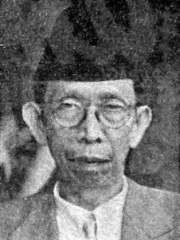
Raden Mas Soewardi Soerjaningrat (EYD: Suwardi Suryaningrat); from 1922 also known as Ki Hadjar Dewantara (EYD: Ki Hajar Dewantara), which is also written as Ki Hajar Dewantoro to reflect its Javanese pronunciation (2 May 1889 in Pakualaman – 26 April 1959 in Yogyakarta), was a leading Indonesian independence movement activist, writer, columnist, politician, and pioneer of education for native Indonesians in Dutch colonial times . Read more on Wikipedia
Since 2007, the English Wikipedia page of Ki Hajar Dewantara has received more than 250,543 page views. His biography is available in 18 different languages on Wikipedia (up from 16 in 2019) . Ki Hajar Dewantara is the 9,683rd most popular politician (down from 8,980th in 2019) , the 27th most popular biography from Indonesia (down from 24th in 2019) and the 13th most popular Indonesian Politician .
Memorability Metrics
Page Views (PV)
Historical Popularity Index (HPI)
Languages Editions (L)
Effective Languages (L*)
Coefficient of Variation (CV)
Page views of Ki Hajar Dewantaras by language
Among politicians.
Among politicians , Ki Hajar Dewantara ranks 9,683 out of 15,577 . Before him are John I of Trebizond , Teimuraz I of Kakheti , Manuel Oribe , Aga of Kish , Agostino Depretis , and Vladimir Bakarić . After him are Adelaide-Blanche of Anjou , Publius Rutilius Rufus , Baldwin Lonsdale , Rehavam Ze'evi , Pau Claris i Casademunt , and Apolinario Mabini .
Most Popular Politicians in Wikipedia
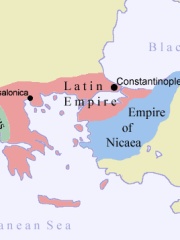
John I of Trebizond
1215 - 1238
Rank: 9,677

Teimuraz I of Kakheti
1589 - 1661
Rank: 9,678
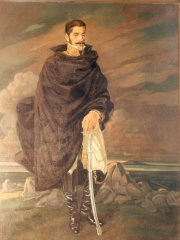
Manuel Oribe
1792 - 1857
Rank: 9,679
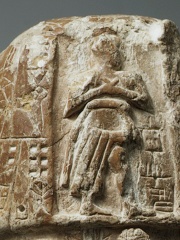
Aga of Kish
Rank: 9,680
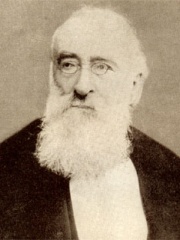
Agostino Depretis
1813 - 1887
Rank: 9,681
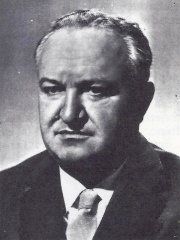
Vladimir Bakarić
1912 - 1983
Rank: 9,682
Rank: 9,683
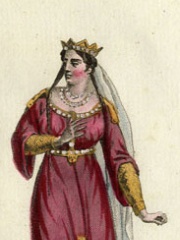
Adelaide-Blanche of Anjou
Rank: 9,684

Publius Rutilius Rufus
158 BC - 78 BC
Rank: 9,685
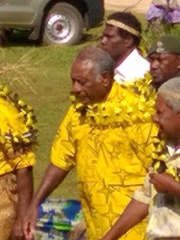
Baldwin Lonsdale
1948 - 2017
Rank: 9,686
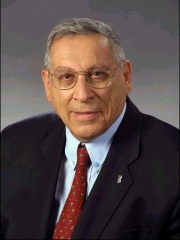
Rehavam Ze'evi
1926 - 2001
Rank: 9,687
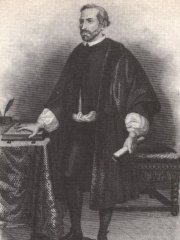
Pau Claris i Casademunt
1586 - 1641
Rank: 9,688
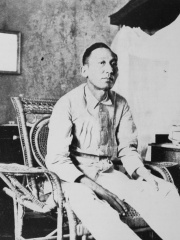
Apolinario Mabini
1864 - 1903
Rank: 9,689
Contemporaries
Among people born in 1889 , Ki Hajar Dewantara ranks 125 . Before him are Ernst Reuter , Alma Karlin , Ludwig Kübler , G. M. B. Dobson , Abelardo L. Rodríguez , and Frieda Fromm-Reichmann . After him are Lloyd Bacon , Tito Schipa , Edmond Privat , Shōji Nishimura , Abbās al-Aqqād , and Shigeyoshi Inoue . Among people deceased in 1959 , Ki Hajar Dewantara ranks 70 . Before him are Enrique Guaita , Adolf Ziegler , Štefan Tiso , Max Baer , Imre Schlosser , and Laxmi Prasad Devkota . After him are The Big Bopper , Luigi Sturzo , Ingrid Vang Nyman , Ramón Fonst , S. W. R. D. Bandaranaike , and Eduard van Beinum .
Others Born in 1889
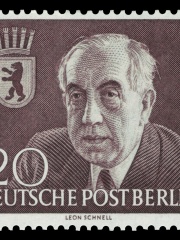
Ernst Reuter
1889 - 1953
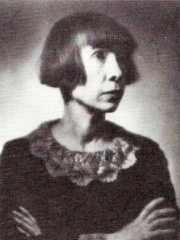
Alma Karlin
1889 - 1950
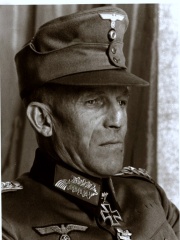
Ludwig Kübler
1889 - 1947

G. M. B. Dobson
1889 - 1975
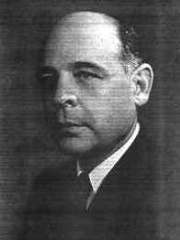
Abelardo L. Rodríguez
1889 - 1967

Frieda Fromm-Reichmann
1889 - 1957
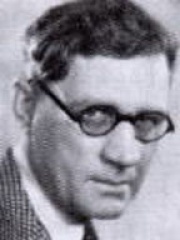
Lloyd Bacon
1889 - 1955
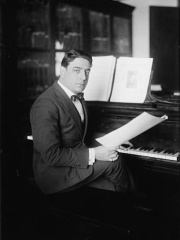
Tito Schipa
1889 - 1965
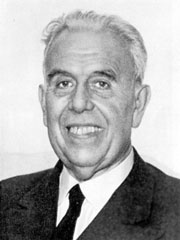

Edmond Privat
1889 - 1962
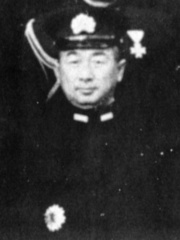
Shōji Nishimura
1889 - 1944
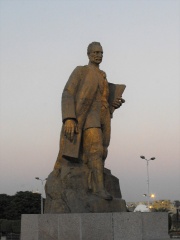
Abbās al-Aqqād
1889 - 1964
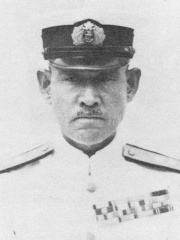
Shigeyoshi Inoue
Others deceased in 1959.
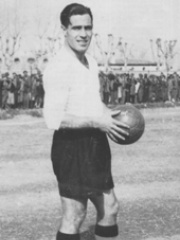
Enrique Guaita
1910 - 1959
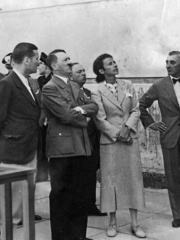
Adolf Ziegler
1892 - 1959
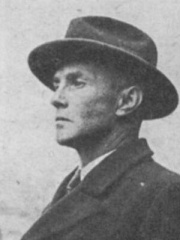
Štefan Tiso
1897 - 1959
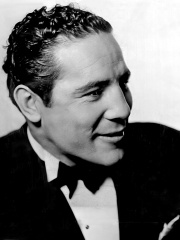
1909 - 1959
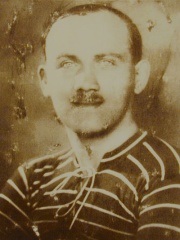
Imre Schlosser
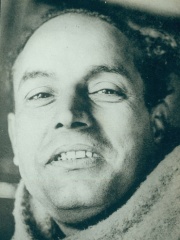
Laxmi Prasad Devkota

The Big Bopper
1930 - 1959
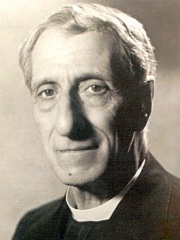
Luigi Sturzo
1871 - 1959
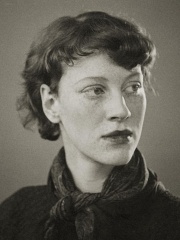
Ingrid Vang Nyman
1916 - 1959
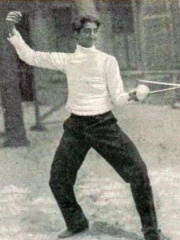
Ramón Fonst
1883 - 1959
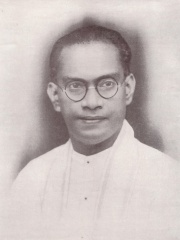
S. W. R. D. Bandaranaike
1899 - 1959
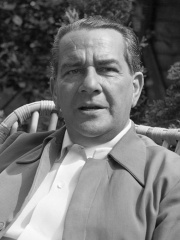
Eduard van Beinum
1900 - 1959
In Indonesia
Among people born in Indonesia , Ki Hajar Dewantara ranks 27 out of 126 . Before him are Lil Dagover (1887) , Enrique of Malacca (1495) , Jusuf Kalla (1942) , Tan Malaka (1897) , Raden Saleh (1811) , and Cut Nyak Dhien (1850) . After him are Hamengkubuwono IX (1912) , Abdul Haris Nasution (1918) , Adam Malik (1917) , Ma'ruf Amin (1943) , Sutan Sjahrir (1909) , and Julius Darmaatmadja (1934) .
Others born in Indonesia
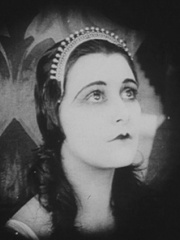
Lil Dagover
1887 - 1980
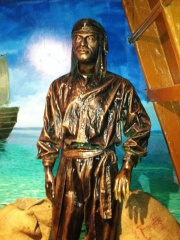
Enrique of Malacca
1495 - 1600
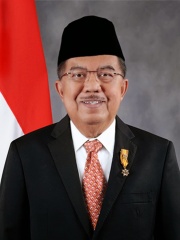
Jusuf Kalla
1942 - Present
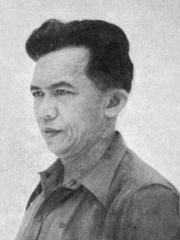
1897 - 1949
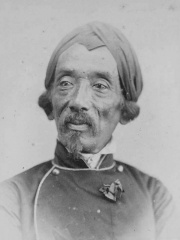
Raden Saleh
1811 - 1880
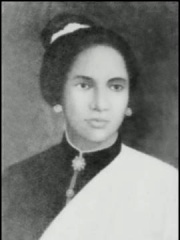
Cut Nyak Dhien
1850 - 1908
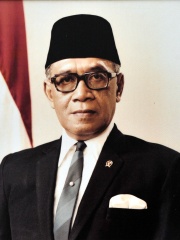
Hamengkubuwono IX
1912 - 1988
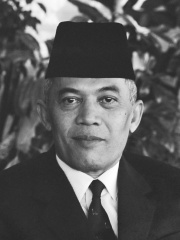
Abdul Haris Nasution
1918 - 2000
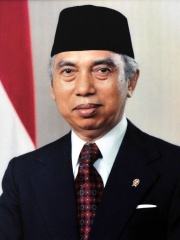
1917 - 1984
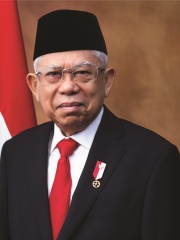
Ma'ruf Amin
1943 - Present
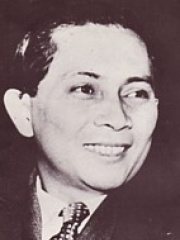
Sutan Sjahrir
1909 - 1966
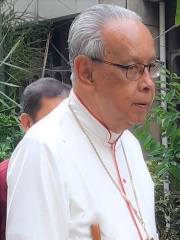
Julius Darmaatmadja
1934 - Present
Among POLITICIANS In Indonesia
Among politicians born in Indonesia , Ki Hajar Dewantara ranks 13 . Before him are Susilo Bambang Yudhoyono (1949) , Gajah Mada (1290) , Mohammad Hatta (1902) , Diponegoro (1785) , Jusuf Kalla (1942) , and Tan Malaka (1897) . After him are Hamengkubuwono IX (1912) , Adam Malik (1917) , Ma'ruf Amin (1943) , Sutan Sjahrir (1909) , D. N. Aidit (1923) , and Fatmawati (1923) .
Indonesian born Politicians
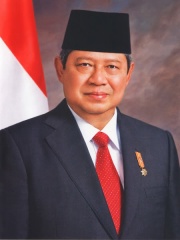
Susilo Bambang Yudhoyono
1949 - Present
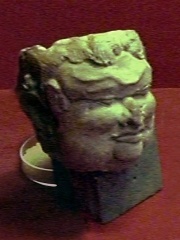
1290 - 1364
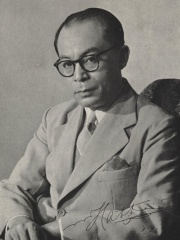
Mohammad Hatta
1902 - 1980
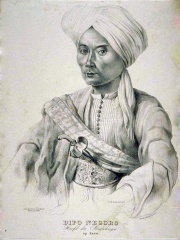
1785 - 1855
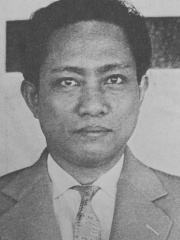
D. N. Aidit
1923 - 1965
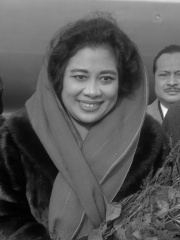
1923 - 1980
- Visualizations
- Occupations
- Occupations / Countries
- Report Data Error
- Privacy Policy
- Terms of Service
- Permissions

Ki Hajar Dewantara
- Pemimpin Taman Siswa (1922 - 1959)
Tempat & Tanggal Lahir
Yogyakarta, Kota Yogyakarta, Daerah Istimewa Yogyakarta, Indonesia, 2 Mei 1889
- Menteri Kementerian Pengajaran Indonesia (1945 - 1945)
- STOVIA (Sekolah Dokter Jawa)
Detail Tokoh
Ki Hajar Dewantara adalah tokoh pemikir dan peletak dasar pendidikan Indonesia yang ikut serta dalam pergerakan nasional Indonesia. Dia adalah tokoh pendiri dari Perguruan Taman Siswa yang menolak Ordonansi Sekolah Liar. Dalam kabinet pertama Republik Indonesia, Ki Hajar Dewantara diangkat sebagai Menteri Pengajaran.
Terlahir sebagai anak dari Pangeran Keraton Pakualam Yogyakarta dengan nama Suwardi Suryaningrat. Suwardi sempat mengenyam pendidikan di Sekolah Dokter Jawa atau School tot Opleiding van Indische Artsen (STOVIA) di Jakarta, namun tidak sampai lulus. Dia memilih menjadi wartawan di beberapa suratkabar seperti Sediotomo, Midden Java, De Expres, Oetoesan Hindia, Kaoem Moeda, Tjahaja Timoer, dan Poesara. Dia pernah aktif di Boedi Oetomo sejak awal berdirinay organisasi itu.
Dia menjadi penggerak Kongres Boedi Oetomo di Yogyakarta. Selain itu dia juga anggota Insulinde. Bersama Cipto Mangunkusumo dan juga Douwes Dekker, mendirikan Indische Partij (Partai Hindia). Para pendiri ini dikenal sebagai Tiga Serangkai. Suwardi ikut protes terhadap peringatan 100 tahun pembebasan Belanda dari Spanyol yang harus dibiayai Indonesia dengan menulis Als ik een Nederlander was (Seandainya Aku Seorang Belanda) di tahun 1913. Karena artikel itu dia dan dua pendiri Indische Partij lain harus dibuang ke Negeri Belanda. Sepulang dari Belanda, dia mendirikan Perguruan Taman Siswa yang banyak muridnya itu dan mulai memakai nama Ki Hajar Dewantara. Meninggal di Yogyakarta pada 26 April 1959.
essay on being kind to others

Search This Blog
Natasha's journal.
Hi everyone! Welcome to my blog, in this blog i'll share to you about my daily task for school!
CUT NYAK DIEN – (KI HAJAR DEWANTARA)
ki hajar dewantara.
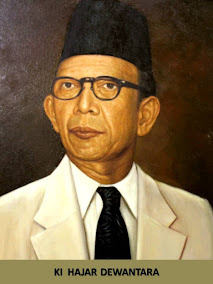
Post a Comment
Popular posts.

MEET MY IDOL – RECOUNT TEXT

Pengertian Biography Text: Contoh, Rumus, Soal dan Jawabannya

Biography Text – Biography terdiri dari dua kata yaitu “ Bios” yang berarti Hidup dan “ Graphia” yang bermakna Tulisan. Teks Biografi sendiri biasanya menggambarkan riwayat hidup seseorang secara nyata dan ditulis dari sudut pandang yang lain. Simak penjelasan lebih lengkapnya mengenai Biografi Text berikut ini:
A. Pengertian Biography Text
Biografi merupakan kisah kehidupan seseorang yang lebih kompleks dari sekadar daftar riwayat hidup dan data-data pekerjaanya. Umumnya, biografi bercerita lebih dalam lagi tentang perasaan yang dihadapi oleh seseorang dalam menghadapi suatu kejadian atau kehidupan seseorang.
Dalam biografi dijelaskan mengenai kehidupan seorang tokoh sejak kecil hingga ia beranjak dewasa, bahkan hingga akhirnya meninggal dunia. Semua jasa, karya, dan hal-hal yang dihasilkan oleh seorang tokoh juga diperjelas. Teks biografi sendiri disusun bukan oleh diri sendiri. Tipe life history Text diantaranya Short life history dan Long life history.
Salah satu contohnya yang dapat kamu lihat pada buku An Illustrated Biography: Geogrge Soros yang merupakan seorang investor dengan julukan “orang yang menggerakkan pasar” yang ada dibawah ini.

B. Rumus Biography Text
Sebuah Biography Text umumnya menggunakan nama spesifik orang-orang yang terlibat dalam suatu biografi yang kemudian dituliskan dalam bentuk lampau.
Sebuah Biography text juga dapat menggunakan kata yang kemudian berhubungan dengan waktu. Catatan biografi umumnya menggambarkan kejadian, jadi lebih banyak menggunakan action verb. Sebuah Biography Text sendiri terdiri dari tiga bagian:
1. Orientation
Orientasi memberi pembaca informasi tentang latar belakang mengapa biografi tersebut ditulis. Paragraf pembuka harus menjawab pertanyaan: siapa, apa, dimana, kapan, dan bagaimana caranya.
Biasanya berisi biodata yang dinarasikan seperti nama lengkap serta tempat dan tanggal lahir. Beberapa informasi umum juga dapat disajikan pada bagian ini sebagai pengenalan para tokohnya.
Pada tahap eventa adalah tahap suatu peristiwa atau kejadian dialami oleh tokoh. Berisi penjelasan suatu cerita baik berupa pemecahan masalah, proses lain, dan berbagai peristiwa yang telah dialami oleh tokoh hingga mengantarkannya pada sebuah kesuksesan. Event sendiri biasanya diceritakan secara kronologis yang merujuk pada waktu tertentu.
3. Re-Orientation (Closing)
Pada bagian ini berisi pandangan penulis pada tokoh yang dikisahkan. Reorientasi bersifat pilihan sehingga penulis dapat memberi pandangan pribadinya tentang tokoh yang diceritakan. Reorientasi juga terdiri dari jenis kesimpulan dengan komentar tentang kontribusi yang kemudian diringkas pada suatu kesimpulan atau jalan cerita yang menarik.
C. Contoh Kalimat Biography Text
1. contoh 1: thomas alva edison.
Thomas Alva Edison as Inventor who was born on February 11, 1847, in Milan, Ohio. Thomas Edison was the youngest of seven children Samuel and Edison. His father was an exiled political activist, while his mother was an accomplished school teacher and had a great influence on Thomas’ early life. Thomas Alva Edison was an American inventor, his inventions include the telegraph, the phonograph, the first practical incandescent electric light bulb, alkaline storage batteries and the Kinetograph (camera for film).
During his lifetime, Edison received many patents. His first patent was obtained from the Electrographic Vote-Recorder on October 13, 1868, at the age of 21. His last patent was for equipment used to hold objects during the electroplating process. While the artificer wasn’t the inventor of the first light bulb, he did find the technology that helped bring it back in time.
Edison was driven to perfect the commercially practical incandescent light bulb after the British inventor invented the first early electric arc lamp in the early 1800s. Thomas Edison later died of complications from his illness on October 18, 1931, at his home, “Glenmont,” in West Orange, New Jersey.
Thomas Alva Edison sebagai Penemu yang lahir pada tanggal 11 Februari 1847, di Milan, Ohio. Thomas Edison sebagai anak bungsu dengan tujuh bersaudara Samuel dan Edison. Ayahnya adalah seorang aktivis politik yang diasingkan, sementara ibunya adalah seorang guru sekolah rule berprestasi dan memiliki pengaruh besar dalam kehidupan awal Thomas. Thomas Alva Edison adalah seorang penemu Amerika, penemuannya meliputi telegraf, fonograf, bola lampu listrik pijar praktis pertama, baterai penyimpanan basa dan Kinetograph (kamera untuk film).
Selama masa hidupnya, Edison menerima banyak hak paten. Hak paten pertamanya sendiri didapat dari Electrographic Vote-Recorder pada tanggal 13 Oktober 1868, di usianya yang masih 21. Hak Paten terakhirnya adalah untuk peralatan yang digunakan memegang benda selama proses lempeng listrik. Sementara artificer bukanlah penemu bola lampu pertama, Ia menemukan teknologi yang membantu membawanya pada masa.
Edison didorong untuk menyempurnakan bola lampu pijar praktis secara komersial setelah penemu Inggris penemuan lampu busur listrik awal pertama di awal tahun 1800 an. Thomas edison kemudian meninggal karena komplikasi penyakit yang dialaminya pada tanggal 18 Oktober 1931, di rumahnya, “Glenmont,” di West Orange, New Jersey.
Untuk lebih memahami apa yang dimaksud dengan biography text, Grameds juga dapat membaca berbagai buku biografi tokoh-tokoh ternama di dunia. Salah satu contohnya adalah buku An Illustrated Biography: Warren Buffett yang ada dibawah ini.

2. Contoh 2: Ki Hadjar Dewantara
Ki Hadjar Dewantara, was born on May 2, 1889 in Yogyakarta. He came from a Yogyakarta aristocratic family and attended a Dutch-sponsored medical school but failed to complete the course. Ki Hadjar Dewantara was the founder of the Taman Siswa school system, and having had a widespread influence, he also pushed for modernization but also promoted Indonesian culture. He feels that education is the best way to strengthen Indonesian society.
The first Taman Siswa school was established in Java in July 1922. Instruction, conducted informally, emphasized the traditional skills and values of Javanese life, particularly in music and dance. Ki Hadjar Dewantara later died on April 26, 1959, in Yogyakarta. After his death, Ki Hadjar Dewantara was named one of the national heroes in the field of education.
Ki Hadjar Dewantara, lahir pada tanggal 2 Mei 1889 di Yogyakarta. Ia berasal keluarga bangsawan Yogyakarta dan menghadiri sekolah kedokteran yang disponsori Belanda namun gagal menyelesaikan kursus. Ki Hadjar Dewantara adalah pendiri sistem sekolah Taman Siswa, dan memiliki pengaruh yang tersebar, ia juga mendorong modernisasi namun juga mempromosikan budaya Indonesia. Ia merasa bahwa pendidikan adalah cara terbaik untuk memperkuat masyarakat Indonesia.
Sekolah Taman Siswa pertama didirikan di Jawa pada bulan Juli 1922. Instruksi, dilakukan secara informal, dengan menekankan keterampilan dan nilai tradisional kehidupan masyarakat Jawa, terutama pada musik dan tarian. Ki Hadjar Dewantara kemudian meninggal pada tanggal 26 April 1959, di Yogyakarta. Setelah wafat, Ki Hadjar Dewantara dinobatkan sebagai salah satu pahlawan nasional di bidang Pendidikan.

Super ITP TOEFL Tricks Skor 600++
D. Latihan Soal Biography Text dan Jawabannya
Soal biography text.
BJ Habibie Bacharuddin Jusuf Habibie called BJ. Habibie was born on twenty five Gregorian calendar months 1936. He was the Third President of the Republic of the Republic of Indonesia (1998–1999). Habibie was born in Parepare, South Sulawesi Province to Alwi Abdul Jalil Habibie and R.A. Tuti Giambattista Marino Poespowardojo. His father was a grower from Gorontalo of Bugis descent and his mother was a Javanese peeress from Yogyakarta. His elders met while learning in Bogor.
Once he was fourteen years old, Habibie’s father died. Following his father’s death, Habibie continued his studies in the national capital then in 1955 moved to Germany. In 1962, Habibie came to the Republic of Indonesia for 3 months on leave. Throughout this point, he was reacquainted with Hasri Ainun, the girl of R. Mohamad Besari. The 2 married in 1962, returning to Germany shortly later. Habibie and his mate settled in Aken for a brief amount before moving to Oberforstbach. In 1963 they had their 1st son, Ilham Akbar Habibie, and later another son, Thareq Kemal Habibie.
1. Where was bj habibie born?
a. BJ Habibie was born in Bogor b. BJ Habibie was born in Gorontalo c. BJ Habibi was born in Yogyakarta d. BJ Habibie was born in Parepare
2. What happened to BJ Habibie when he was fourteen years old?
a. His father died b. He graduated from university c. He married d. He continuing his study
3. When did BJ Habibie get married?
a. He got married in 1955 b. He got married in 1962 c. He got married in 1963 d. He got married in 1936
4. Who is the first son of BJ Habibie?
a. Hasri Ainun b. Thareq Kemal Habibie c. R. Mohamad Besari d. Ilham Akbar Habibie
5. “In 1963 that they had their 1st son, Ilham Akbar Habibie, and later another son, Thareq Kemal Habibie.” (paragraph 2) The word “they” supported the text on top of refers to…
a. BJ Habibie b. Ilham Akbar Habibie and Thareq Kemal Habibie c. BJ Habibie and his wife d. Alwi Abdul Jalil Habibie and R.A. Tuti Giambattista Marino Poespowardojo
General Sudirman was a high ranking Indonesian military personnel throughout the Indonesian national revolution. He was the primary commander-in-chief of the Indonesian defense force, he continues to be widely revered within the country. On twelve November 1945, at AN election to come to a decision, the military’s commander-in-chief in YogyakartA. The twenty four years previous Sudirman was chosen over Oerip Soemohardjo in a very close votE. While waiting to be confirmed, Sudirman ordered AN assault on British and Dutch forces in Ambarawa.
The following battle and British withdrawal strongly supported Sudirman’s well-liked support, and he was ultimately confirmed on eighteen Dec. General Sudirman commanded military activities throughout Java, together with a show of force in Yogyakarta on one March 1949. Once the Dutch began retreating, in July 1949 Sudirman was recalled to Yogyakarta and verboten to fight any. In late 1949 Sudirman’s infectious disease came, and he retired to Magelang, wherever he died slightly quite a month when the Dutch recognised Indonesia’s independencE. he’s buried at Semaki Heroes’ burying ground in Yogyakarta
6. What’s the monologue about?
a. A life of General Soedirman b. The family of General Soedirman c. The death of General Soedirman d. A spirit of General Soedirman for the Indonesian defense force e. The military forces commanded by General Soedirman
7. What will we tend to infer from the monologue?
a. His uncle’s name was conjointly Soedirman b. Gregorian calendar month is that the month of Maulud c. Soedirman was shot and died within the military war d. Soedirman died once he was comparatively young e. Soedirman died on one March 1949

Mastering English Tenses, Grammar, Vocabulary: Belajar Autodidak Bahasa Inggris

Kunci Jawaban Biography Text
1. Kunci Jawaban No.1 adalah D. BJ Habibie was born in Parepare
Pembahasan: Pertanyaan di atas adalah tentang “where”, dimana BJ Habibie lahir? Pada paragraf pertama kalimat ketiga, tertulis “Habibie was born in Parepare, South Sulawesi Province…”. Jadi jawaban yang tepat adalah D.
2. Kunci Jawaban No.2 adalah A. His father died.
Pembahasan: Di atas menanyakan tentang “what happened”, apa yang terjadi pada BJ Habibie saat berumur 40 tahun? Kita lihat pada paragraf terakhir, tertulis “When he was fourteen years recent, Habibie’s father died” berarti Ketika ia berumur 14 tahun ayahnya meninggal. Maka jawaban yang tepat adalah A “His father died”.
3. Kunci Jawaban No.3 adalah B. He got married in 1962.
Pembahasan: Di atas menanyakan “when”, kapan BJ Habibie menikah? Pada paragraf ketiga, kalimat ke four rule tertulis, “The 2 married on twelve could 1962,…” artinya mereka (BJ Habibie dan Ainun) menikah 12 Mei 1962. Maka jawaban yang tepat adalah BJ Habibie menikah pada 12 Mei 1962 atau He got married in 1962, jawaban yang tepat yaitu B.
4. Kunci Jawaban No.4 adalah D. Ilham Akbar Habibie.
Pembahasan: Di atas menanyakan tentang “who”, siapa anak pertamanya BJ Habibie? Pada paragraph a pair of kalimat terakhir tertulis, “In could 1963 that they had their 1st son, Ilham Akbar Habibie, …” berarti pada tahun 1963 mereka memiliki anak pertama, yaitu Ilham Akbar Habibie,..”. Maka jawabannya yang tepat adalah anak pertama BJ Habibie adalah Ilham Akbar Habibie. Jawaban yang tepat adalah “D”.
5. Kunci Jawaban No.5 adalah C. BJ Habibie and his wife.
Pembahasan: “They” artinya adalah mereka. Maka, kata “they” itu menggantikan kata apa? Untuk menjawab jenis soal ini, kita bisa lihat di kalimat sebelumnya, yaitu kalimat “Habibie and his mate settled for a brief amount before moving to Oberforstbach. In could 1963 that they had their 1st son, Ilham Akbar Habibie, and later another son, Thareq Kemal Habibie”. Di kalimat pertama tertulis “Habibie and his mate settled in Aachen…”. Maka “they’ itu merujuk atau menggantikan kata “Habibie and his wife”. Maka jawaban yang paling tepat adalah “they” mengacu kepada “Habibie and his wife”, jawabannya yang tepat adalah C.
6. Kunci Jawaban No.6 adalah A biography of General Soedirman
7. Kunci Jawaban No.7 adalah D. Soedirman died when he was relatively young
Kategori Ilmu Berkaitan Bahasa Inggris
- Buku Kamus Bahasa Inggris
- Buku Bahasa Inggris Kelas 7
- Buku Bahasa Inggris Kelas 8
- Buku Bahasa Inggris Kelas 9
- Buku Bahasa Inggris Kelas 10
- Buku Bahasa Inggris Kelas 11
- Buku Bahasa Inggris Kelas 12
- Novel Best Seller
- Novel Romantis Cinta
Materi Bahasa Inggris
- Simple Present Tense
- Simple Past Tense
- Simple Future Tense
- Past Perfect Tense
- Past Continuous Tense
- Past Perfect Continuos Tense
- Present Perfect Tense
- Present Perfect Continuous Tense
- Present Continuous Tense
- Future Perfect Tense
- Future Perfect Continuous Tense
- Future Continuous Tense
- Past Future Perfect Continuous: Rumus dan Contohnya
- Past Future Tense
- Past Future Perfect Tense: Rumus dan Contohnya
- Direct Indirect Speech
- Conditional and Subjunctive Sentence
- To Invinitive and Gerund
- Part Of Speech
- Phrasal Verb
- Subject Verb Agreement
- Modal AUxiliary Verb
- Linking Verb
- Regular Verb
- Action Verb
- Intransitive Verb
- Adjectve Clause
- Adverb Clause
- Verb Phrase
- Expressing Intention
- Report Text
- Recount Text
- Narrative Text
- Advertisement Text
- Caption Text
- Contoh Soal TOEFL
- Countable and Uncountable Noun
- Explanation Text
- Descriptive Text
- Discussion Text
- Announcement Text
- Review Text
- Analytical Exposition text
- Cara memperkenalkan diri dalam bahasa inggris
- Hortatory Exposition
- Kata Benda Bahasa Inggris
Contoh Pengumuman Dalam Bahasa Inggris
- Contoh Surat Dalam Bahasa Inggris
Contoh Penggunaan PM dan AM
- Motivation Letter
- Business Letter
Sumber: dari berbagai sumber
You may also like

9 Contoh Surat Pribadi dalam Bahasa Inggris

Memahami Countable and Uncountable Noun dan Contohnya

Memahami Materi Bahasa Inggris Kelas 10: Jenis-Jenis...

Pengertian Superlative, Bentuk dan Contohnya

About the author

IMAGES
VIDEO
COMMENTS
Statue of Ki Hadjar Dewantara in front of Sekolah Tamansiswa. Raden Mas Soewardi Soerjaningrat (EYD: Suwardi Suryaningrat); from 1922 also known as Ki Hadjar Dewantara (EYD: Ki Hajar Dewantara), which is also written as Ki Hajar Dewantoro to reflect its Javanese pronunciation (2 May 1889 in Pakualaman - 26 April 1959 in Yogyakarta), was a leading Indonesian independence movement activist ...
Recount Text Biografi Ki Hajar Dewantara. Born with the name Raden Mas Soewardi Soeryaningrat. He came from the royal family environment Yogyakarta. Raden Mas Soewardi Soeryaningrat, when reached the age of 40 years by the count of the Year Caka, renamed Ki Hadjar Dewantara. Since then, he no longer uses a knighthood in front of his name.
Biografi Ki Hajar Dewantara Bahasa Inggris dan Artinya. KI HAJAR DEWANTARA. Raden Mas Soewardi Soeryaningrat was born in Yogyakarta on May 2nd 1889. He came from Pakualaman family, the son of GPH Soerjaningrat, grandson of Pakualam III and grew up in a family of Yogyakarta Kingdom. Then, in 1922 when he was 40 years old (according to the count ...
Ki Hajar Dewantara died on 26 th April 1959 in Yogyakarta. He was buried at the Taman Wijaya Brata, tombs for Taman Siswa's family. His face was also immortalized on the Indonesian currency denomination of old 20,000 rupiahs. Brief Biography of Ki Hajar Dewantara. Full Name: Raden Mas Soewardi Soerjaningrat
Ki Hajar Dewantara was a writer, columnist, politician and advocator of Indonesian independence from the Dutch colonial power. However, he may be most rememb...
Raden Mas Soewardi Soerjaningrat ; from 1922 also known as Ki Hadjar Dewantara, which is also written as Ki Hajar Dewantoro to reflect its Javanese pronunciation, was a leading Indonesian independence movement activist, writer, columnist, politician, and pioneer of education for native Indonesians in Dutch colonial times. He founded the Taman Siswa school, an institution that provided ...
Halo semuanya! 🤯👋🏻Kami mendapatkan tugas Bahasa Inggris, yaitu membuat Recount Text. Kalian udah tau belum apa yang dimaksud dengan Recount Text ini? Jadi...
Ki Hajar Dewantara (also known as Raden Mas Soewardi Soerjaningrat), 1889-1959, was a writer, columnist, politician and advocator of Indonesian independence from the Dutch colonial power. However, he may be most remembered for his pioneering role in the development of education in the Indonesian colony. A native of Yogyakarta (Java), Dewantara founded the Taman Siswa school in 1922 in Yogyakarta.
Ki Hadjar Dewantara was born on the 2nd of May 1889 into the Javanese royal house of Paku Alam, with the birth name Raden Mas Suwardi Suryaningrat. He later changed his name to Ki Hadjar Dewantara (also spelled as Ki Hajar Dewantara) and dropped his aristocratic title of "Raden Mas".Dewantara completed his studies at Europeesche Lagere School (a Dutch elementary school) in Yogyakarta.
May 2nd, the birth date of Ki Hajar Dewantara, is also designated as a day of education in Indonesia. It is an appreciation to Ki Hajar Dewantara for his concern for education in Indonesia. Source: dosenpendidikan.co.id. Ki Hajar Dewantara also left behind several mottoes that are quite well-known in Indonesian education.
Biographical recount of Ki Hajar Dewantara - Free download as Word Doc (.doc / .docx), PDF File (.pdf), Text File (.txt) or read online for free.
Recount Text Biography 9. Victoria Caroline Beckham is an English singer-songwriter, dancer, model, actress, fashion designer and business woman. She was born on April 17, 1974, in Essex, EnglanD. She became famous in the 1990's with the pop group "The Spice Girl"and was known as Posh SpicE.
Page 2 - Recount Text - Biography_Neat. P. 2. CHAPTER 9 Father of Indonesian Education In this chapter you will: - Read biography of Ki Hajar Dewantara - Learn how to write biography - Write a short biography - Work together with your classmate Prereading Activities Personal Connection Imagine 30 years from now someone will write a biography ...
Since 2007, the English Wikipedia page of Ki Hajar Dewantara has received more than 250,543 page views. His biography is available in 18 different languages on Wikipedia (up from 16 in 2019) . Ki Hajar Dewantara is the 9,683rd most popular politician (down from 8,980th in 2019) , the 27th most popular biography from Indonesia (down from 24th in ...
Ki Hajar Dewantara: Sung Tulada, Ing Madya Mangun Karsa, Tut Wuri Handayani | PDF | Indonesia | Java. my recount text - Free download as Word Doc (.doc / .docx), PDF File (.pdf), Text File (.txt) or read online for free. buat yg maless sy sediakan.
Ki Hadjar Dewantara is an education figure who is also the mastermind of Indonesia's education. philosophy ing ngarsa sung tuladha, ing madya mangun karsa, tut wuri handayani, and eventually ...
Ki Hajar Dewantara adalah tokoh pemikir dan peletak dasar pendidikan Indonesia yang ikut serta dalam pergerakan nasional Indonesia. Dia adalah tokoh pendiri dari Perguruan Taman Siswa yang menolak Ordonansi Sekolah Liar. Dalam kabinet pertama Republik Indonesia, Ki Hajar Dewantara diangkat sebagai Menteri Pengajaran. Terlahir sebagai anak dari Pangeran Keraton Pakualam Yogyakarta dengan nama ...
Biography of Ki Hajar Dewantara, pioneer of education during the colonial period and received the national hero title in Indonesia. Bibliographic information. Title: Ki Hadjar Dewantara: putra keraton, pahlawan bangsa: Author: Syaiful Hermawan: Publisher: C-Klik Media, 2020: ISBN: 623733324X, 9786237333241: Length:
About Press Copyright Contact us Creators Advertise Developers Terms Privacy Policy & Safety How YouTube works Press Copyright Contact us Creators Advertise ...
Platform Belajar. Life and Times of Ki Hajar Dewantara | Bahasa Inggris Kelas 11. Teman KOCO, yuk kita simak teks berjudul "Life and Times of Ki Hajar Dewantara" pada materi R
Two years after receiving the title of Doctor Honoris Causa, on April 28, 1959, Ki Hadjar Dewantara died in Yogyakarta and was buried there. Now, the name Ki Hadjar Dewantara is not only immortalized as a figure and hero of education (the father of National Education) whose birth date is May 2 as National Education day, but is also designated as the Hero of the National Movement through a ...
Untuk lebih memahami apa yang dimaksud dengan biography text, Grameds juga dapat membaca berbagai buku biografi tokoh-tokoh ternama di dunia. Salah satu contohnya adalah buku An Illustrated Biography: Warren Buffett yang ada dibawah ini. 2. Contoh 2: Ki Hadjar Dewantara. Ki Hadjar Dewantara, was born on May 2, 1889 in Yogyakarta.